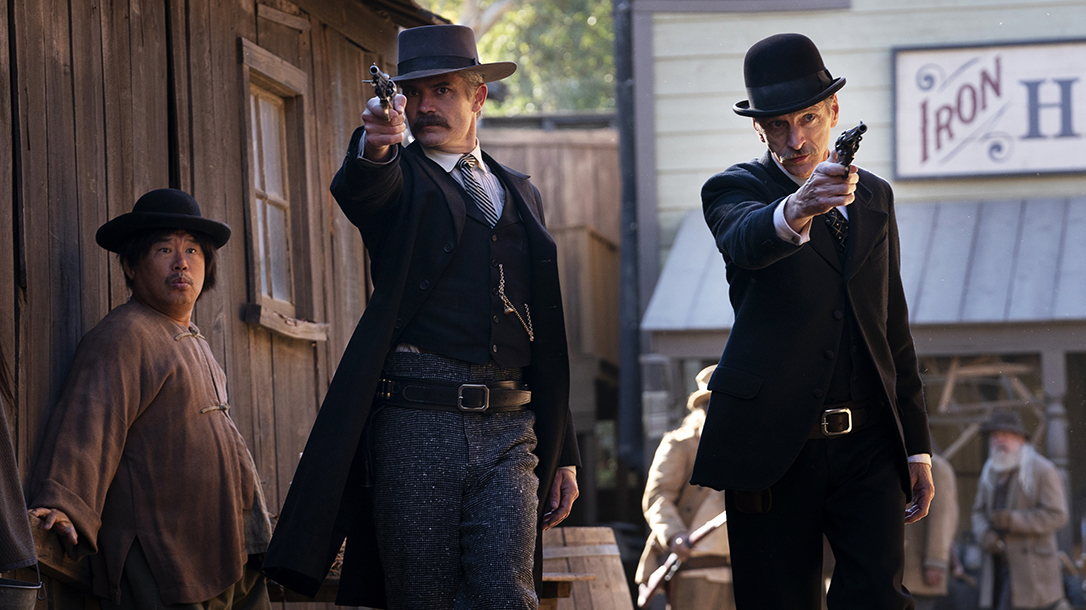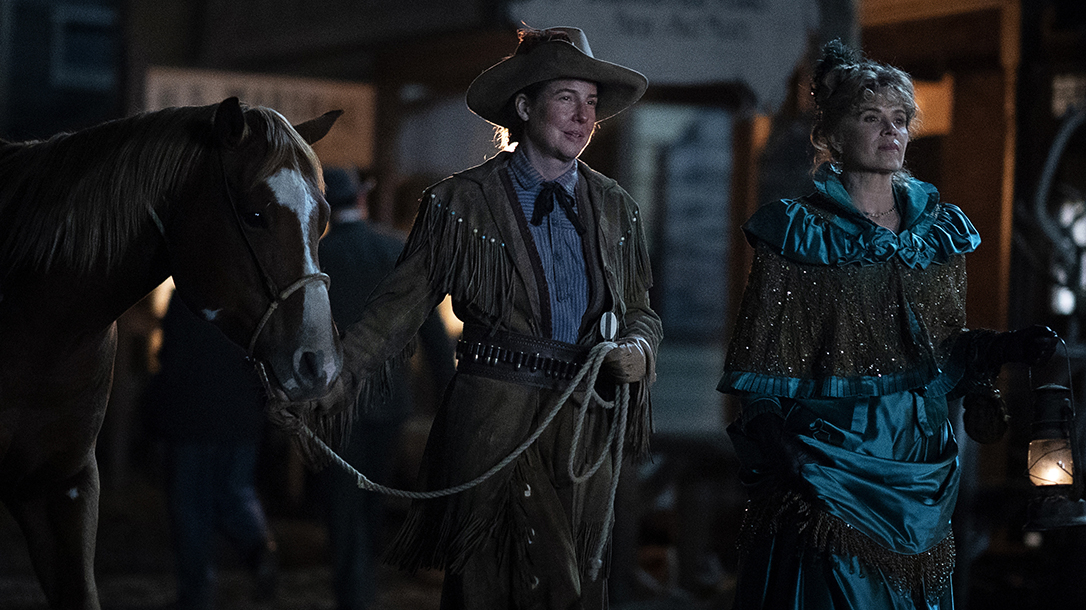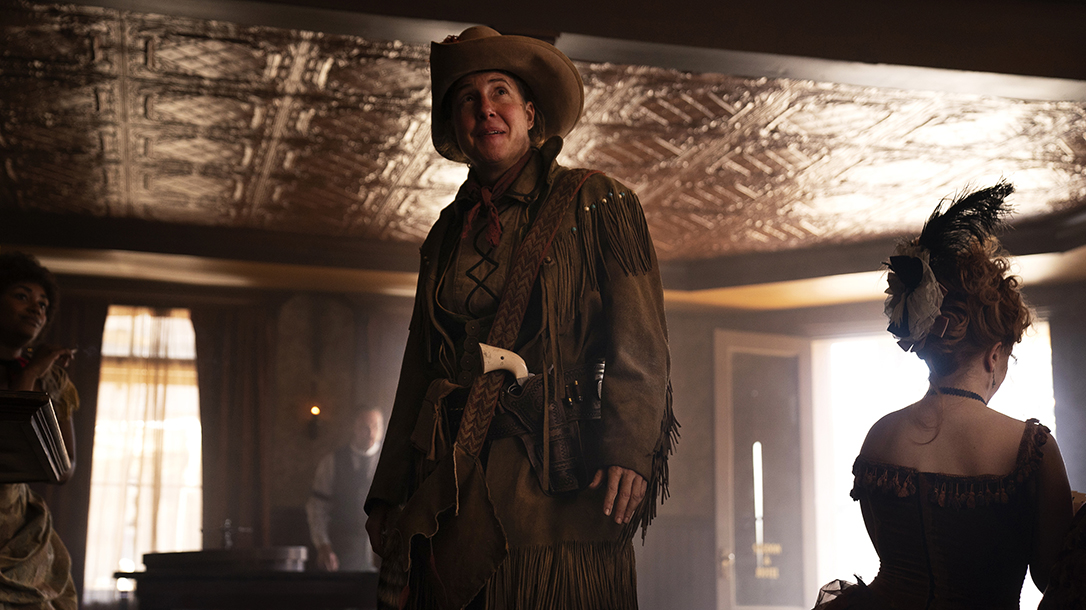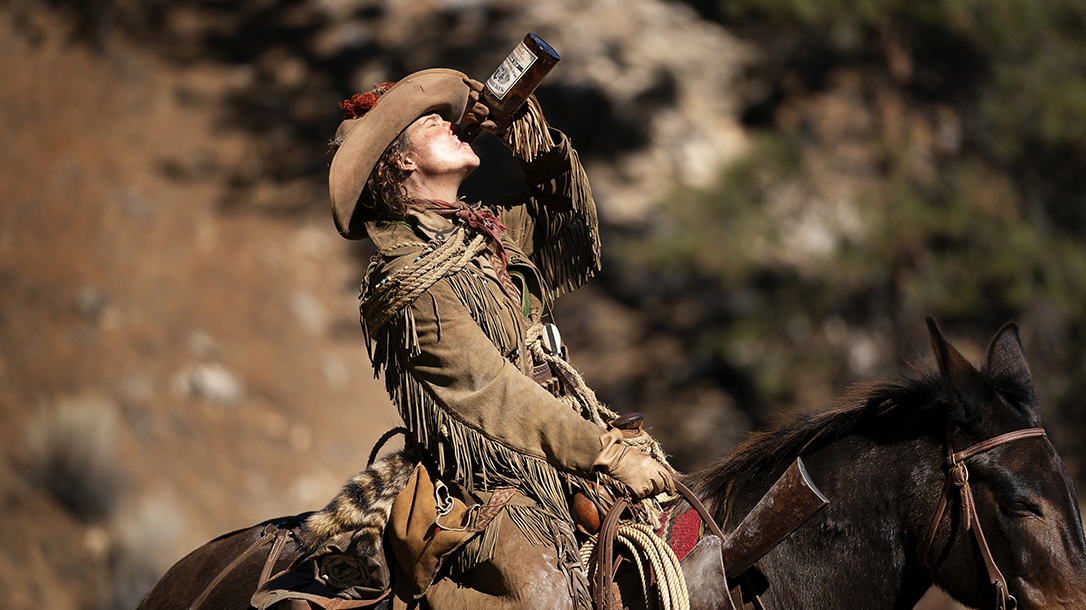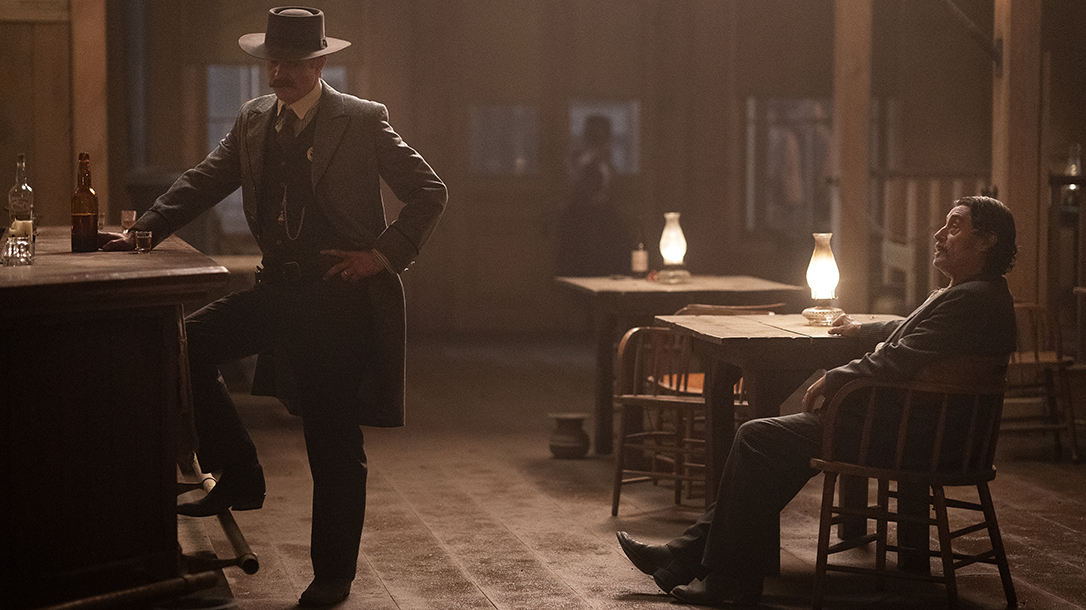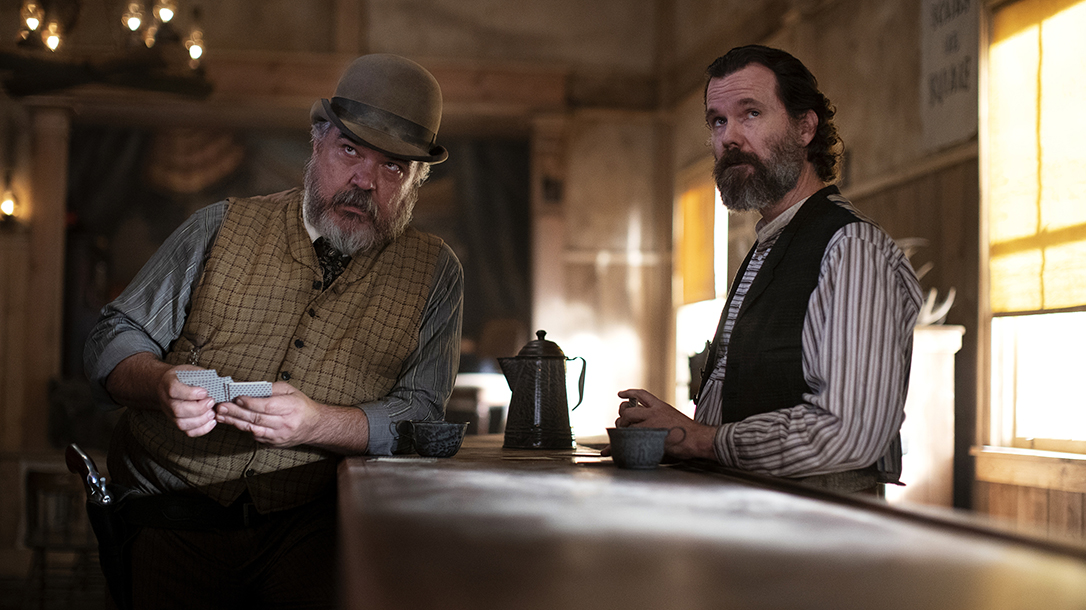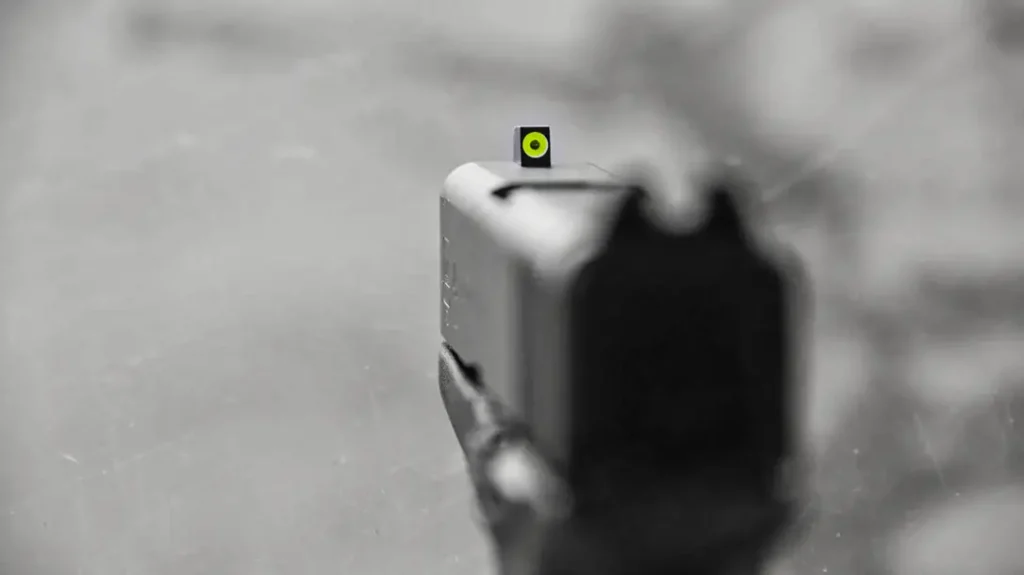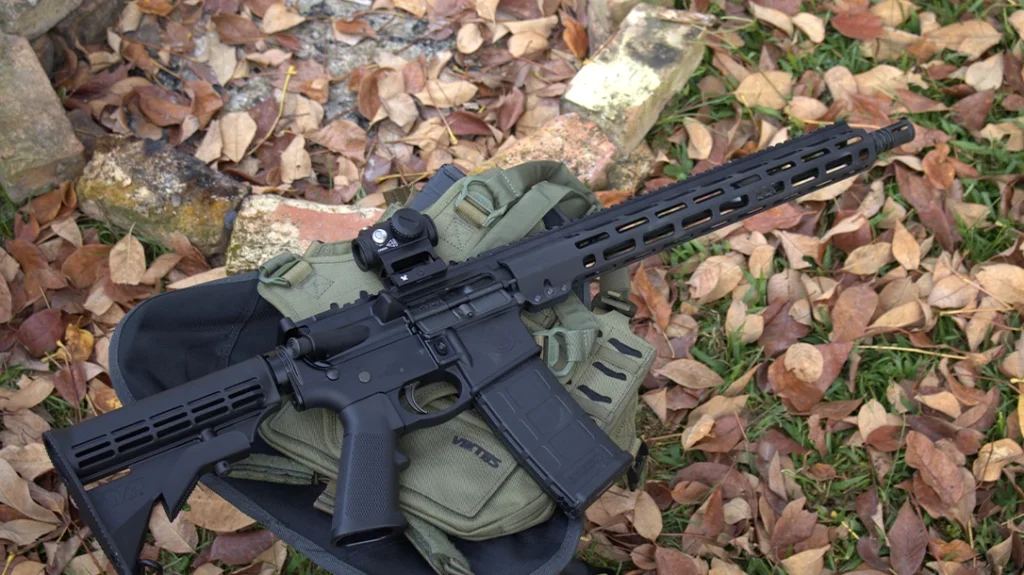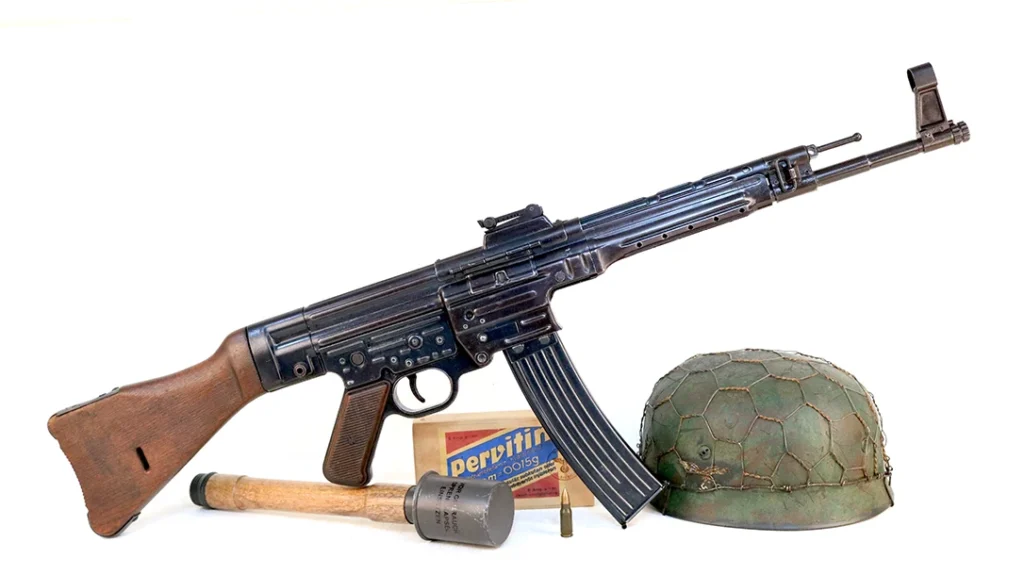While the fictional world of Game of Thrones hogged the TV spotlight this past spring, another HBO series made a return with a bit less fanfare, yet it fulfilled the hopes of its fans. Deadwood: The Movie debuted on May 31. It offered a short but sweet return to the mining camp that was populated by rogues, bandits, prospectors, prostitutes, opportunists, immigrants and even the occasional good spirit simply looking for a better life.
For the show’s faithful fans, it was so much more than just a reunion special. Thirteen years have passed since the show ended abruptly after its third season, with more of a whimper than a bang, which in some ways exemplified how this wasn’t the archetypal show about life on the frontier. The good guys—if you can call them that given their various dubious deeds—survived but they didn’t exactly “win,” and more than a few loose ends left hanging.
Advertisement — Continue Reading Below
The Final Chapter
Fast-forward to 2019 and Deadwood: The Movie addressed those loose ends in a way only show creator David Milch could, despite his recent Alzheimer’s diagnosis. For anyone who feared that the movie wouldn’t have the same edge only needed to look as far as one of HBO’s promo posters, which boldly proclaimed, “Welcome the F*** Back,” with a Colt covering the profanity.
Instead of dancing around the time that has passed, Milch embraced it, with the movie taking place in 1889, a full decade after the events of the last episode. The film begins with South Dakota becoming an official state and goes on to include a murder, a funeral, a wedding, a betrayal, redemption and even something resembling justice.
A Different Trail
When Deadwood debuted on HBO in March of 2004, it was unlike any Western to date. This was a show where the good guys weren’t always that good, the bad guys didn’t typically wear black hats, and the saloons were filled with ladies who certainly weren’t just “dancing girls”—unlike in Gunsmoke, where it was only hinted that Marshal Matt Dillon went to “visit” Miss Kitty every once in a while.
Advertisement — Continue Reading Below
Deadwood was also a departure from typical Westerns in that it was set in the Black Hills of the Dakota Territory, with the first season taking place in 1876, just six months after the founding of the mining camp. Instead of the dust-filled streets on the High Plains or Southwestern desert that have been iconic for Westerns, this one featured streets of mud, filth and God only knows what else.
There was some irony, too, that one of the show’s main characters was named Al Swearengen (played by Ian McShane), who spouted what could only be described as “colorful dialog.” While technically anachronistic, as much of the dialog in the series featured quite to bit of modern profanity, this was actually to create a level of shock value and highlight the crudeness of life in the near-lawless mining camp. At the time, such slang would have been seen as more blasphemous than scatological. The creators wisely opted to use our modern profanity over period slang, which could have come off as satirical or almost cartoonish.
Heroes & Crooks
The series further differed from other Westerns in that there was no true villain to hate—no strongman, bandit and gang. Instead, it was a show that wasn’t so black and white, at least not in the first season. The chief anti-hero may have plotted and schemed at the expense of others, and even killed for greed, but no battle lines were drawn. In fact, by the end of season three, Swearengen was one of the camp’s protectors.
Advertisement — Continue Reading Below
The good guys also weren’t so good. Instead of actually cleaning up the town, Seth Bullock (Timothy Olyphant) and Sol Star (John Hawkes) could only bring a semblance of order from the lawless chaos, while other seemingly “good men,” such as Wild Bill Hickok (Keith Carradine) and Whitney Ellsworth (Jim Beaver), typically ended up 6 feet under.
Bringing It Back
Even before the third season aired, HBO had opted not to renew the show, and instead planned to wrap up events with a two-hour movie that would have a more open timeframe and allow for a broader narrative. Then nothing happened. Time passed and some of the sets were destroyed in a fire—which is ironic considering the actual Deadwood camp was damaged in a fire and rebuilt.
Advertisement — Continue Reading Below
However, Deadwood: The Movie might not have happened at all had HBO not scored a hit with Westworld. The set had also been used in Django Unchained, but no blueprints from the original series had been saved because it was cancelled so abruptly. But in just a few months, the town was recreated and ready for the massive production.
“We shot on the same muddy streets and set, on the same backlot, and it’s all instantly recognizable,” said Dave Klein, the project’s cinematographer. “I re-watched the entire three seasons just before we started preparing, but the time jump is easy to negotiate if you’ve recently watched the final season.”
The setting should feel like a familiar destination to viewers, yet it was different enough to highlight that 10 years had passed. The town features stone and brick buildings, a train, telegraphs and even the telephone.
Advertisement — Continue Reading Below
Producing Deadwood
On the production front, Deadwood was notable in that, unlike many Hollywood productions that have exteriors in one location and interiors on a soundstage, the buildings are all real inside and out. The only exception is Swearengen’s expansive, two-story Gem Theater, which was built on a soundstage due to the complexities of its interior.
There were some challenges in making Deadwood: The Movie, including all the mud and the need to address electric lighting. According to Klein, “Towards the end of the Western era, electric lighting showed up in Deadwood, and that presented its own challenges but also gave me more options in terms of lighting,” explained Klein. “There was still a good mix of firelight, oil lamps and electric street lights, none of which really overpowered the others. We just let them be integrated into the night lighting of the town.”
This mixture of light sources also helps the movie look visually different from the series. “I needed to be respectful of the original series but used softer, more natural-looking light sources while still trying to be honest to the previous photography,” said Klein. “So the light is warmer, limited in its source options and needed to feel very real, because if the lighting doesn’t feel real and is noticeable for any reason, I haven’t done my job. On Deadwood: The Movie, there were simply more rules put on me by the storyM ,, sets and locations, but it was brilliant to shake up my standard light sources for a while.”
Advertisement — Continue Reading Below
The Firepower Deadwood Guns
Creating a believable Western also means that the actors use period-correct firearms and react accordingly. “We had phenomenal armorers who were more experienced with these types of weapons than any I’ve worked with before, and they trained with the actors endlessly,” said Klein. “Even pulling a six-shooter out of its holster looks silly if it seems like the first time it’s been done.”
Still, the production couldn’t use full-load blanks because of the neighborhood that surrounds Melody Ranch. “That’s one thing that always bothers me when we’re using firearms,” admitted Klein. “Actors don’t react to a half-load blank cartridge. It doesn’t have any kickback, and they just don’t react to it the way one does to a full-load blank, which has almost the kick of a live round.”
But, just as Deadwood: The Movie offers a realistic look at life on the frontier at the end of the 19th century, it also wasn’t meant to be an action film. Violence and gunplay were certainly part of the Old West. However, it was far less rip roaring than most might expect, and the production went for a subtle approach.
Advertisement — Continue Reading Below
“We photographed authentic-looking shootouts that weren’t over the top,” said Klein. “And to me, we were grounded in reality.”
Deadwood Guns
I recently spoke to armorer Joey Dillon about what went into arming the good and bad folks of Deadwood: The Movie. Here’s what he had to say.
The movie takes place 10 years after the show ended. Did the firepower of Deadwood guns change?
That was considered, but while it was a decade later, we didn’t think things would have changed too much. One example is that we didn’t include any cartridge conversion firearms and felt there was no need to include those.
Advertisement — Continue Reading Below
How important are specific guns to the characters?
The first thing to remember is that Deadwood wasn’t really a gunslinger show. So there wasn’t a lot of emphasis on changing things up or presenting anything flashy. We wanted to stay pretty traditional with most of the guns.
There were mostly the same type of firearms that we had in the series. However, we changed the belts and holsters to show some of the characters’ progress. For example, Bullock used the same gun from the series—a Remington Model 1875—but we gave him a much nicer holster. We also looked at period photos of Calamity Jane and tried to replicate the holster she wore, and Carrico’s Leatherworks was able to make one that matched perfectly.
Tell us about some of the smaller details.
We included some cool stuff, such as the Single Action Army “Artillery” with ivory grips used by Armie Hammer in The Lone Ranger. One of the bad guys carries a nickel-plated Smith & Wesson Schofield Model 3 with ivory grips that we used in the Netflix series Godless.
Johnny carries a Single Action Army with a bird’s-head grip, which is something that could have been customized in the West. Dan Dority had cleaned up a lot by the time of the movie. He carries a Rossi Overland coach gun with external hammers. And there are some older guns, like Winchester Model 1873s.
Do viewers expect more realism today?
I think they do. Viewers are much more knowledgeable today. Movies and videos games especially are getting people into these guns; that means they expect to see the real thing. A generic lever gun isn’t enough today.
The shooting styles were different back then, so what went into ensuring the actors handled their Deadwood guns correctly?
Westerns require a lot of training, especially if someone is used to modern shooting. We had this issue on Godless, where we had to avoid the tactical look in favor of one-handed shooting.
On Deadwood: The Movie, I worked with everyone to make sure that the stances and techniques were accurate. The actors had to reholster their sidearms like it was second nature. But the draws were more important—they had to look suave and realistic at the same time.
Deadwood Guns is from the Fall 2019 issue of Guns of the Old West magazine. Grab your copy at OutdoorGroupStore.com. For digital editions, visit Amazon.
